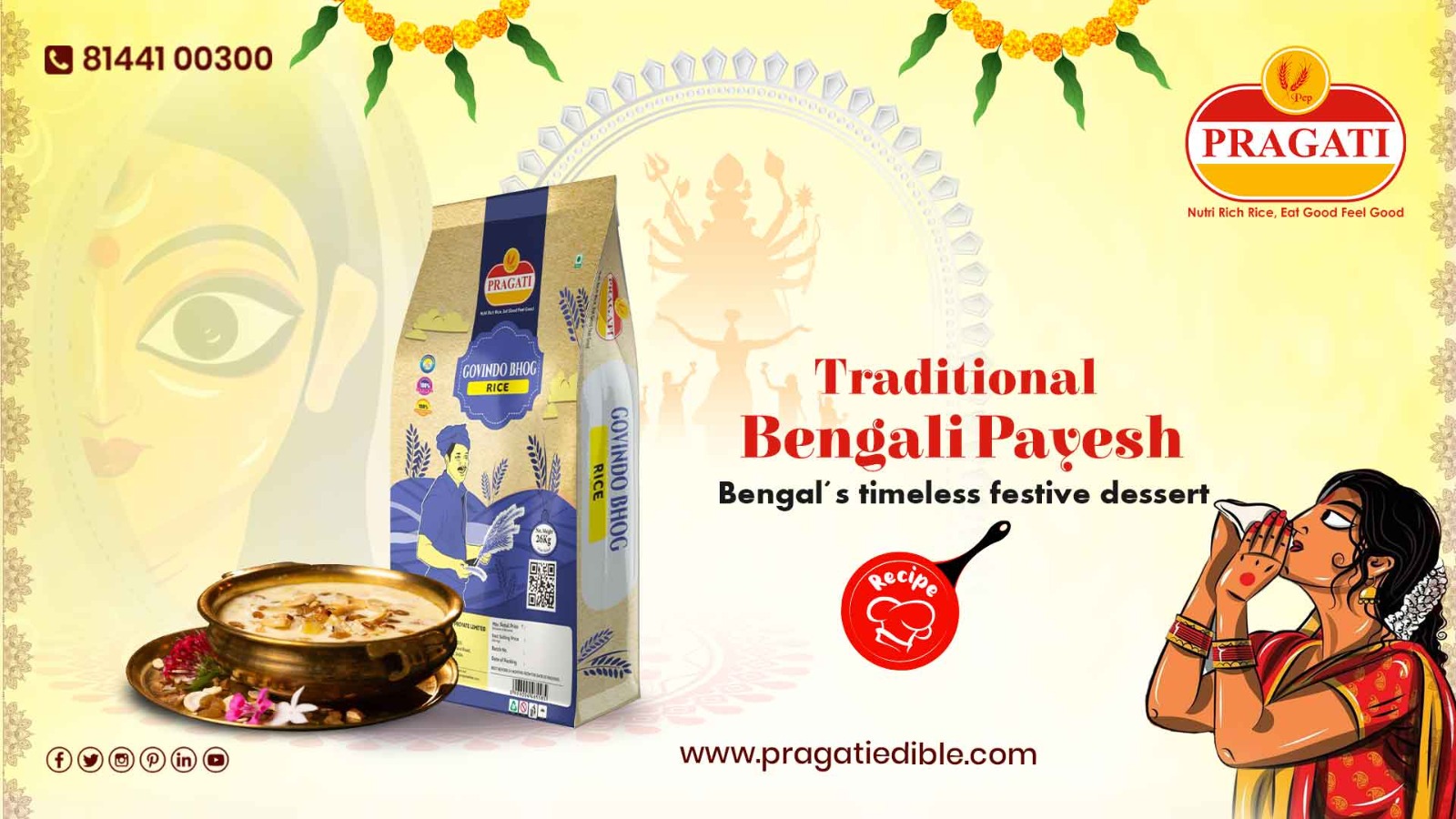Payesh and Festivity: The Bengali Tradition Made Divine with Pragati Gobindobhog Rice | Durga Puja Special
23 September, 2025
 In Bengal, no festival, ritual, or family celebration is complete without a bowl of Payesh – the creamy, fragrant rice pudding that symbolises sweetness, prosperity, and togetherness. While it is prepared throughout the year, Payesh becomes especially significant during Durga Puja, the grand festival of Bengal, when it is offered as bhog to Goddess Durga and shared with family, friends, and the community.
In Bengal, no festival, ritual, or family celebration is complete without a bowl of Payesh – the creamy, fragrant rice pudding that symbolises sweetness, prosperity, and togetherness. While it is prepared throughout the year, Payesh becomes especially significant during Durga Puja, the grand festival of Bengal, when it is offered as bhog to Goddess Durga and shared with family, friends, and the community.
What makes Payesh truly divine is the choice of rice – and for centuries, Bengalis have trusted the short-grained, aromatic Gobindobhog rice. Its natural fragrance, soft texture, and authentic taste give Payesh its signature richness. Today, Pragati Gobindobhog Rice carries forward this tradition, making festive sweets more authentic than ever.
Cultural & Religious Importance of Payesh in Bengal
Payesh is not just a dessert; it is a ritual of devotion and celebration. From the kitchens of grandmothers to the bhog offerings at temples, Payesh is deeply rooted in Bengali culture.
Why Choose Pragati Gobindobhog Rice for Payesh?
Traditional Payesh requires a rice that is not only soft and starchy but also aromatic. This is why Pragati Gobindobhog Rice is the perfect choice.
When you prepare Payesh with Pragati Gobindobhog Rice, you don’t just cook a dessert – you recreate the authentic Bengali tradition that has been cherished for generations.
Traditional Bengali Payesh Recipe (Step-by-Step)
Ingredients:
Method:
Payesh in Durga Puja & Family Celebrations
Durga Puja is not just a religious festival – it is the heartbeat of Bengal’s culture, a time of joy, food, and togetherness. Among the many dishes that grace the bhog, Payesh holds a special place.
Thus, Payesh is not just food, but a legacy of love and devotion that binds families during Durga Puja and beyond.
From temple bhogs to family feasts, Payesh is the eternal symbol of Bengal’s festive spirit. Its creamy sweetness carries blessings, prosperity, and love in every spoonful.
This Durga Puja, prepare the authentic Bengali Payesh with Pragati Gobindobhog Rice, and relive the age-old tradition that makes Bengal’s celebrations truly divine. Because festivals are not just about rituals – they are about savouring the timeless flavours that connect us to our roots.
In Hindu rituals, applying rice grains over tilak is a timeless tradition repres...
Explore the symbolic role of rice in Puja rituals and why it remains a sacred fo...
Durga Puja celebrations are incomplete without Payesh - Bengal’s timeless fest...
Discover the authentic Kanika recipe from Odisha, a festive sweet pulao cooked w...
Celebrate Raksha Bandhan with a fragrant Bengali Basanti Pulao made using Gobind...